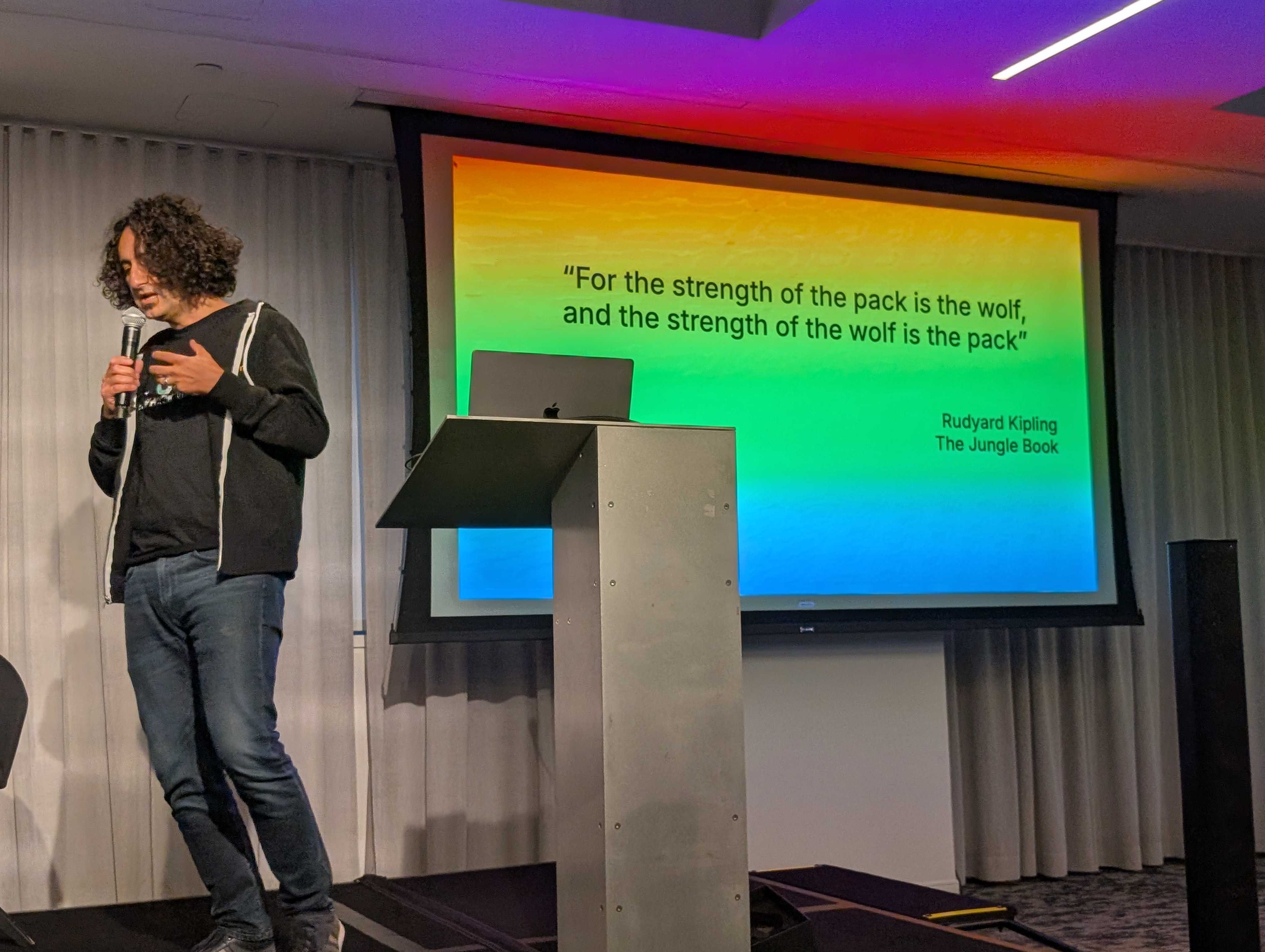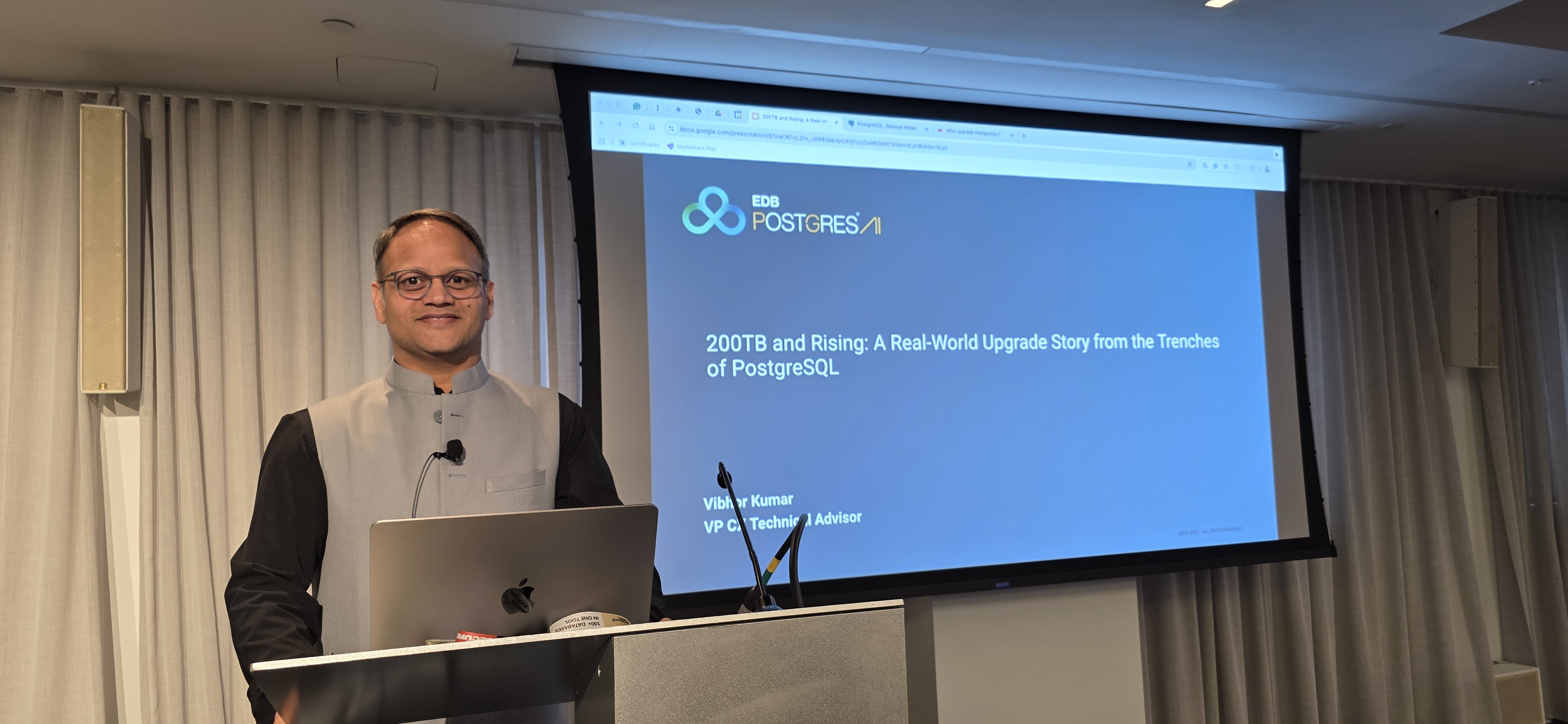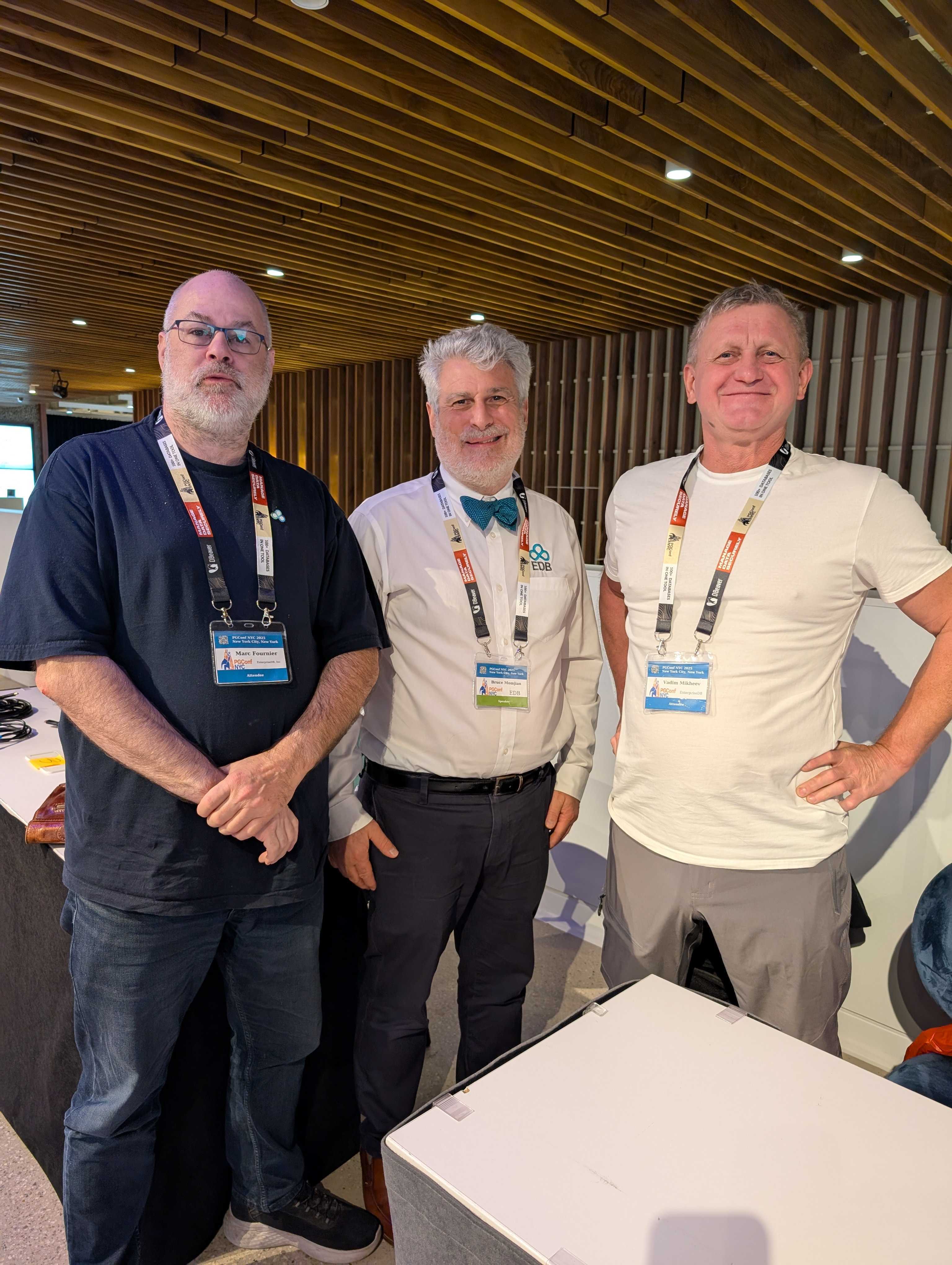PostgreSQL Conference NYC 2025 arrived at a great time for the Postgres world. The community had just shipped version 18—one of the most extensive releases in recent memory—and discussion in New York reflected what that means in practice: not reinvention, but steady evolution across performance, extensibility, and scale.
Across three days of sessions, what emerged was a reaffirmation of how Postgres keeps adapting to modern workloads without losing its coherence. The conversations ranged from deep dives into the optimizer and index access methods to newer territory—AI integration, data governance & sovereignty, and hybrid data architecture—all linked by the same through-line: Postgres continues to work because it was designed to change.
Maturity without stagnation
Several talks examined how Postgres continues to modernize its core without compromising stability. The optimizer—often described as the database’s “brain”—remains a recurring point of fascination. Its ability to translate declarative SQL into efficient execution plans still shapes how developers think about databases at scale.
That depth of maturity stood beside newer capabilities in version 18: asynchronous I/O for parallel performance gains, native OAuth integration for enterprise identity and access control, and expanded interfaces for table and index access methods. Together, these updates showed how the project evolves from the inside out with small architectural shifts that broaden what’s possible for everyone building on top.
Extensibility as the common thread
If the release set the backdrop, extensibility was the language of the week. Talks and hallway conversations returned to it constantly: Postgres’s capacity to absorb new ideas without breaking the old ones.
Developers shared use cases that spanned analytical and AI workloads, with pgvector frequently cited as proof of how far the model can stretch. The ability to store and search embeddings directly within Postgres has turned what was once a transactional engine into a foundation for emerging AI pipelines, without leaving the comfort of SQL or the guarantees of relational consistency.
It’s the same mechanism that powers GIS, auditing, and time-series extensions. The result is a database that grows horizontally through its ecosystem rather than vertically through forced redesigns.
Creativity in structure
Another recurring idea was how flexible schema design encourages creative problem-solving. Sessions explored modeling techniques that balance relational discipline with the freedom of semi-structured data types like JSON and arrays. The message was pragmatic: structure isn’t rigidity; it’s context.
Attendees traded examples from finance, healthcare, and media systems, each using Postgres to reconcile predictable entities with unpredictable relationships. The underlying philosophy—start from the questions your application needs to answer, then design a schema that can evolve with them—felt distinctly Postgres: practical, experimental, and unpretentious.
Postgres at enterprise scale
Scale featured heavily, but less as spectacle and more as an operational reality. Case studies walked through migrations and upgrades measured in hundreds of terabytes, emphasizing reliability over heroics. The takeaway was that large data volumes no longer make Postgres an edge case; they’re the new normal.
Several sessions pointed out that the same extensibility driving innovation also supports governance. Integrations with key management systems through OAuth and ecosystem tools like pgAudit give enterprises finer control without closing off open-source flexibility. Scale, security, and sovereignty are increasingly treated as part of the same conversation.
A community that iterates
Between talks, the hallways carried the familiar mix of veteran contributors and first-time attendees trading ideas. Long-time maintainers reconnected while newer developers discussed patches and pull requests.
Initiatives like the newly launched Postgres Women Linkedin group added another layer of momentum, signaling how community participation is widening alongside the technology itself.
Looking ahead
PGConf NYC 2025 offered a snapshot of Postgres in motion: a system mature enough to be trusted, flexible enough to keep surprising its users, and open enough to absorb the next wave of ideas. From optimizer tuning to AI extensions, the conversations showed a community refining—not redefining—what Postgres can do.
Next up at PGConf.EU in Riga, that conversation will continue in a different time zone but with the same focus: understanding how an open system stays current by design. Check out our preview blog to see what we’re bringing to the agenda.



